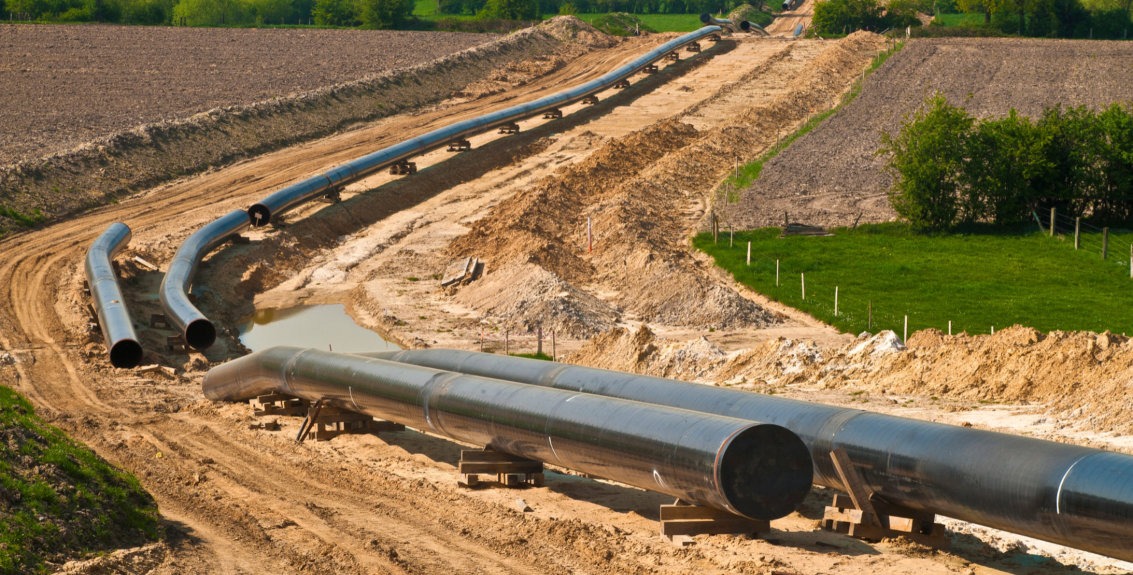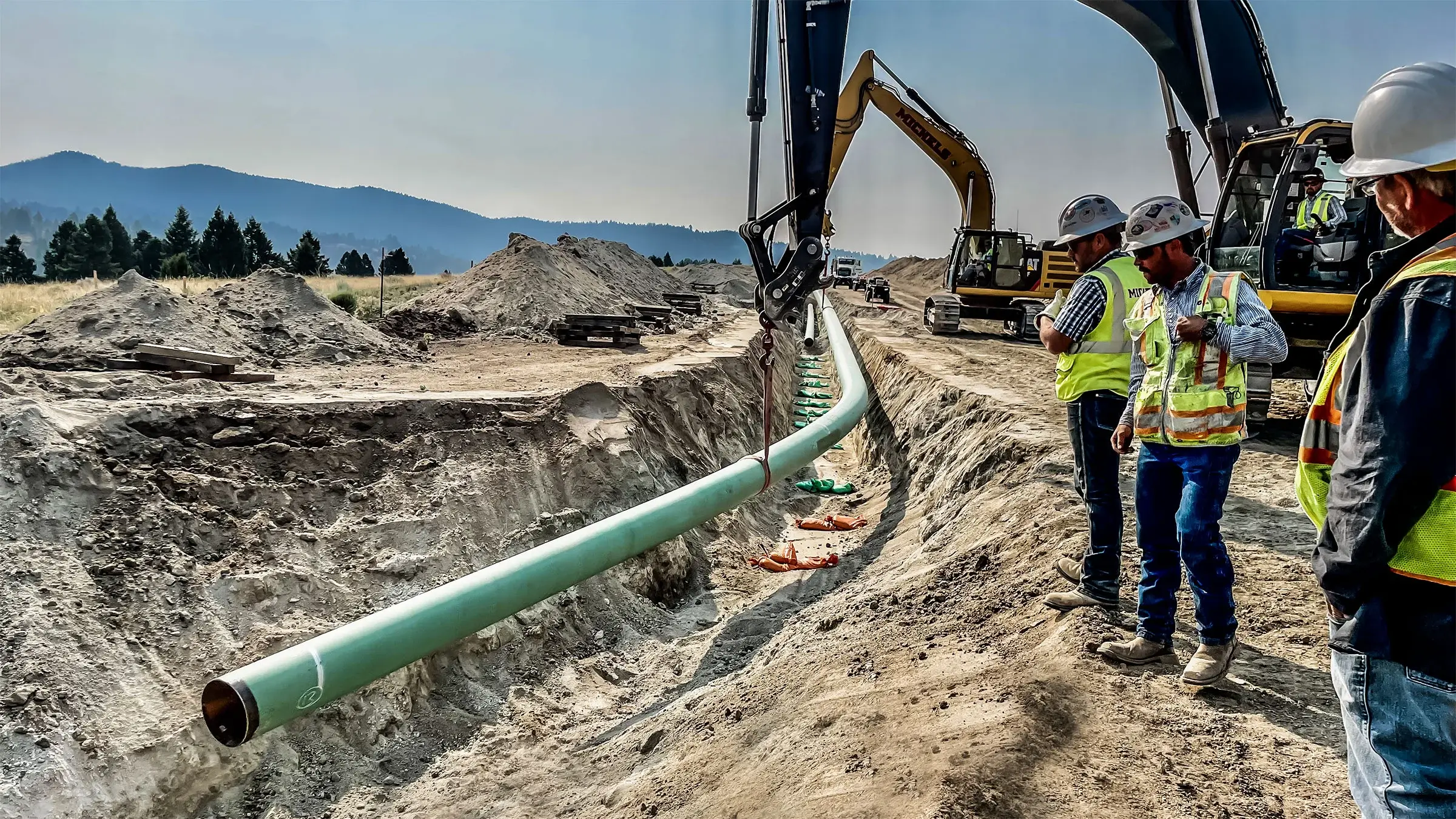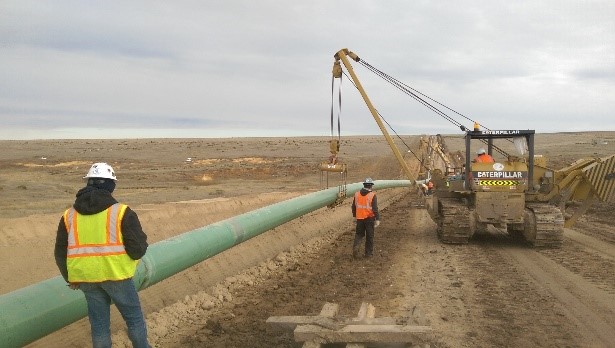Why You Should Consider Underground Work With Creek Pipe trenching services
Comprehending the Basics of Pipes Installation: What You Need to Know Regarding the Refine
Correct pipe installation is vital for any type of pipes system. It calls for careful factor to consider of different factors, including material choice and adherence to local regulations. A well-planned format can stop issues like pressure loss, while the right devices assure efficient signing up with strategies. Even experienced installers can make usual mistakes. Comprehending these essentials can bring about a more effective and sturdy system, triggering a better look at the key components involved in the procedure.
Choosing the Right Materials for Pipe Installation
When considering pipe installation, the choice of ideal materials is necessary to ensuring sturdiness and functionality. Various materials are readily available, each offering special advantages and factors to consider. PVC pipes are lightweight, immune to rust, and cost-effective, making them excellent for residential pipes. On the other hand, copper pipes, known for their longevity and capability to endure high temperature levels, are often favored for home heating systems.Additionally, galvanized steel pipelines supply toughness and longevity, suitable for durable applications, although they are susceptible to rust over time.For below ground installments, polyethylene pipelines are preferred due to their flexibility and resistance to stress splitting. Proper product selection depends upon the certain needs of the job, consisting of pressure rankings, temperature variants, and the chemical nature of the fluids being transported - Creek Pipe HDPE installation. Ultimately, informed selections regarding pipe products contribute considerably to the general success and long life of pipes systems
Recognizing Local Building Ordinance and Laws
Exactly how can recognizing local building ordinance and laws impact pipe installation? Familiarity with these codes is crucial for ensuring that pipe installations are safe, compliant, and effective. Regional building regulations outline particular requirements concerning materials, installation techniques, and safety and security actions, which need to be abided by to avoid prospective lawful problems and costly fines.Failure to conform can bring about inspections being failed, hold-ups in job completion, and even mandated removal of improperly installed pipes. Additionally, understanding zoning regulations and laws can influence the kind of materials permitted, in addition to the approaches made use of for installation.Contractors and home owners alike need to invest time in reviewing local laws prior to commencing any kind of installation job. This positive strategy not only advertises security however also boosts the general quality and longevity of the pipes system, eventually fostering long-lasting functionality and fulfillment.
Planning Your Pipe Layout and Layout
Proper planning of pipe format and style is necessary for achieving a reliable plumbing system. This procedure begins with reviewing the certain demands of the space, considering the location of components and appliances. Precise dimensions assure that pipes are effectively routed, reducing bends and transforms that can result in push loss.Consideration of the flow prices and the kinds of materials utilized is critical, as different products have varying toughness and compatibility with plumbing systems. Additionally, the developer ought to make up future growths or modifications to the design, permitting flexibility in situation of renovations.Efficient water drainage and air flow are also significant elements of the layout, as they protect against clogs and ensure proper waste removal. Partnership with neighborhood structure codes ensures conformity and safety and security, which is critical in any type of plumbing installation project.
Crucial Tools and Equipment for Installation
Effective pipe installation rests on having the right tools and tools available. Important tools consist of pipe cutters for tidy cuts, wrenches for tightening up installations, and pliers for clutching and turning pipelines. In addition, a degree warranties pipelines are mounted evenly, while a gauging tape help in attaining specific lengths.For details products, a welding torch may be required for copper pipelines, while a PVC cutter is important for plastic alternatives. Safety and security tools, such as gloves and goggles, safeguards installers from potential hazards throughout the process.A pipeline bender can be especially helpful for creating smooth contours without endangering integrity, while a torque wrench guarantees that links are protected to the manufacturer's specifications.Having these tools conveniently offered not only promotes a smoother installation procedure but likewise contributes to the overall toughness and performance of the plumbing system. Correct devices is crucial in achieving long-lasting outcomes.
Methods for Correct Pipe Signing Up With and Sealing
Attaining a protected and leak-free link backhoe near me between pipelines needs careful interest to signing up with and securing methods. Numerous approaches exist, each suited to different pipe products this article and applications (Creek Pipe near me). Welding is frequently utilized for steel pipes, making certain robust connections with warm fusion. On the other hand, plastic pipelines take advantage of solvent cement or combination welding, creating strong, irreversible bonds.Threaded links prevail in both steel and plastic piping, calling for accurate placement and making use of suitable sealers, such as Teflon tape or pipe dope, to avoid leaks. Compression installations supply another option, where mechanical stress safeguards the pipes with each other, making them easily took apart for maintenance.Regardless of the method selected, correct preparation is crucial. This includes cleansing pipe finishes and guaranteeing they are free from debris. Carrying out these strategies diligently will enhance the longevity and dependability of the pipe system, ultimately adding to its efficient performance
Common Mistakes to Prevent Throughout Installation
Throughout pipe installation, preventing typical mistakes is important for making sure a trusted and reliable system. One frequent mistake is stopping working to measure and cut pipelines properly, which can lead to inappropriate fittings and leakages. Furthermore, overlooking to examine the compatibility of materials can lead to rust or other damage with time. Poorly securing joints and connections can also produce weak points in the system, causing prospective failures.Another typical backhoe loader price mistake is forgeting the relevance of incline and drainage; pipes need to be installed at the proper angle to help with correct flow. Insufficient assistance for pipelines can cause drooping and stress, influencing the honesty of the system. Ultimately, neglecting neighborhood codes and guidelines can cause pricey rework and security risks. By recognizing these risks, installers can considerably boost the toughness and efficiency of pipe systems.
Maintenance Tips for Long-lasting Pipe Solutions
To ensure the long life of pipe systems, normal examinations and cleaning are essential practices. These steps aid recognize prospective concerns prior to they rise right into significant issues. Additionally, employing proper insulation methods can further safeguard pipes from temperature level variations and environmental aspects.
Normal Inspections and Cleaning Up
Regular inspections and cleansing are vital for preserving the durability and efficiency of pipe systems. On a regular basis taking a look at pipelines for indicators of corrosion, leakages, or clogs can assist determine possible concerns prior to they rise right into pricey repair work. Cleaning up pipelines regularly eliminates buildup that can restrict circulation and promote deterioration. It is advisable to schedule inspections a minimum of annually, however extra frequent checks may be needed in high-usage environments. Using professional solutions for thorough cleansing assurances that all particles is effectively gotten rid of. Additionally, keeping documents of inspections and maintenance activities aids in tracking the system's health and wellness gradually - Creek Pipe HDPE installation. By focusing on these practices, residential property proprietors can enhance the reliability and life-span of their pipe systems
Proper Insulation Techniques
Efficient insulation techniques play a necessary role in maintaining the effectiveness and longevity of pipe systems. Proper insulation decreases warmth loss in warm water pipes and avoids freezing in cold water pipelines, substantially lowering power expenses and prospective damages. Typical materials made use of for insulation consist of fiberglass, foam, and rubber, each offering varying degrees of thermal resistance. It is important to assure that insulation is applied evenly, covering all revealed areas without voids. In addition, securing insulation with ideal bolts assists keep its position and effectiveness in time. Regular assessments need to be carried out to recognize deterioration, guaranteeing timely replacements. By executing these techniques, pipe systems can operate successfully and have a prolonged life span, eventually profiting both the environment and the homeowner.

Often Asked Questions
Exactly how Do I Figure Out the Appropriate Pipe Dimension for My Project?
Determining the appropriate pipe size includes assessing the task's circulation demands, stress requirements, and the type of fluid being delivered. Consulting layout requirements and performing computations assurances perfect performance and performance in the installation process.
What Are the Ecological Effects of Various Pipe Products?

Can I Install Pipes Myself or Should I Hire a Professional?
The question of whether to install pipes individually or hire a professional commonly depends on the individual's ability level and task complexity. A specialist may guarantee compliance with laws and lower potential lasting issues.

How Much Time Can I Anticipate My Pipe Installation to Last?
The longevity of pipe installation varies significantly, typically lasting 20 to 100 years, depending upon products, installation quality, and maintenance. Routine evaluations and proper care can improve longevity and protect against premature failings.

What Are the Indications of a Failing Pipe System?
Signs of a stopping working pipe system consist of frequent leakages, uncommon water stress adjustments, blemished water, mold development, and persistent dampness. House owners must check these indicators to stay clear of costly damages and warranty prompt repairs are made.